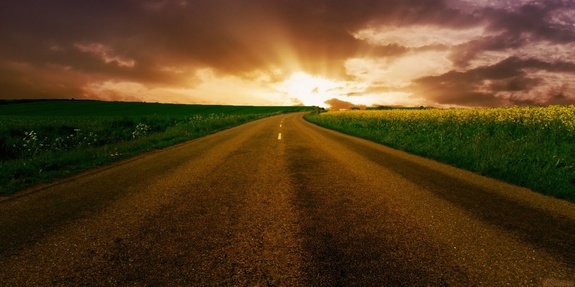Ever since Binyavanga Wainaina’s essay ‘How to write about Africa’, progressives the world over have sneered at mentions of Africa’s savannahs and Africa’s friendly, hospitable, happy –even though hungry- people and Africa’s sunsets.
And rightly so. Brazil, Japan and Italy are also beautiful, but their continents are not stereotyped as a natural paradise and their people not as child-like: all smiling and dancing and happy with so very little -whilst, of course, being exploited by ‘the West’ and abused by their own corrupt rulers, and occasionally engaged in cruel tribal wars. Strangely, the ‘happy paradise’ stereotypes seem to inhabit the same imagined universe as their negative twins corruption, disease, violence and famine.
But foreign journalists who attempt to stay away from both these sides of the same coin, can find themselves in a pickle. At a ZAM meeting, a colleague who professed not to entertain ‘corruption’ or ‘Aids’ out of a fear of ‘confirming cliché’s’, was met with disbelief by a Nigerian investigative journalist, who had dedicated most of his working life to fighting corruption in his home country. ZAM Chronicle was severely criticised for a recent report on criminals who conducted murderous witchcraft rituals: the article, it was said, portrayed ‘Africans’ as ‘savages.’
But -the point is often made- many cliché’s are true, or they wouldn’t have become cliché’s. Much of Africa’s nature is breathtakingly beautiful. Many people are very friendly: people in poor countries usually cannot afford to alienate their neighbours and visitors. There is poverty and lack of access to medicines; there are rickety state machineries that breed corruption; there is bad management of harvests, which at times leads to famine. There are ruthless criminals who kill for money, and power-hungry, yet insecure, leaders who rely on ‘black magic’. Political power is often hotly and violently contested along illogical borders once drawn by foreign powers. And, with the gap between rich and poor as wide as it is, with so much at stake, those who fight, often fight with tooth, nail and claw.
These observations, however, are much more than just a set of stereotypes. They are manifestations of a fascinating and complex universe, in which every human endeavour, achievement and great wonder is found next to nightmares and despair. The continent’s history of violence, conquest, exploitation and abuse has caused great trauma, but also given rise to great resilience and magnanimity. South Africa’s apartheid and Rwanda’s genocide horrified the world; then these countries impressed with their recovery and capacity to, if not forgive, then at least get on with the business of living and building regardless.
Other countries, like South Sudan and the Central African Republic (CAR), are presently in the throes of violence, with sometimes seemingly no end in sight. Oppression and abuse have traumatised entire generations. “The victims of yesterday are the henchmen of today,” a local news report in the CAR headlined recently. But a youth movement in South Sudan is calling all youngsters to refuse to fuel the war as ‘raw materials’ (see The Contrarian in this issue), and even in CAR new leaders are coming to the fore, seeking a future.
War, crime, cruelty, poverty, natural beauty, friendliness, religion, magic, ethnic tension and conflict all feature everywhere in the world. None of these are unique to Africa. But the measure, form and mix in which they occur differ in accordance with social, geographical, political and historical conditions A history of exploitation permeates consciousness in former colonies, just like a history of being exploiters makes for guilt, charity and arrogance in the headquarters of global power.
ZAM Chronicle’s correspondents try to make sense of the African universe and its place in relation to the rest of the world. They dig up truths that can hopefully help to show a way forward. They do this precisely because they love their landscapes and cities and villages and people. They don’t want the world to define them with foreign scripts and projections, be they positive or negative, pretty or ugly, traditional or modern. They want to tell their own stories and present their own struggles for meaning and renewal.
ZAM Chronicle wants to show everything that is African, precisely because it is not ‘about Africa’, as our motto reads, but about what the continent has to tell the rest of the world: tales of tragedy and hurt, but also of creativity, new beginnings, justice struggles and discoveries, told by journalists, photographers and artists who work in, imagine, fight for and translate this universe to the world. They are feminists, nephews of pirates, dreamers, sons and daughters of parents who battled to send them to school.
One of our correspondents is a traditional chief who assesses the needs of his people by visiting them regularly on his motorbike. Another is a brilliant and courageous teenager who dresses in burka. Yet another cherishes his nomadic background on his Facebook page: “I am a nomad. I can run. What's an ID? What's a swoop? What's wrong with my dress? I am a nomad. My goats, sheep and camels know me too well.”
Cattle herders and industries exist next to one another in Africa. They share the same beautiful horizon. Rather than try and decide which ‘single story’, -as writer Chimamanda Ngozie Adichie has called it- befits the continent, the world should be breathlessly following the human struggles taking place within so much diversity. It could learn something.


